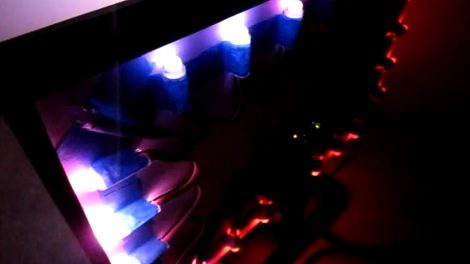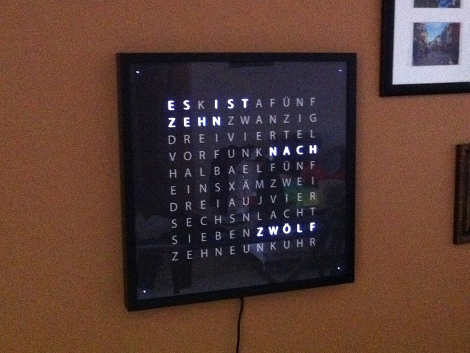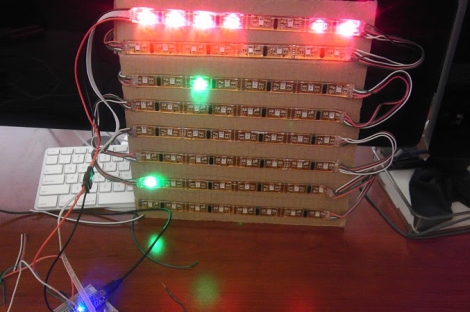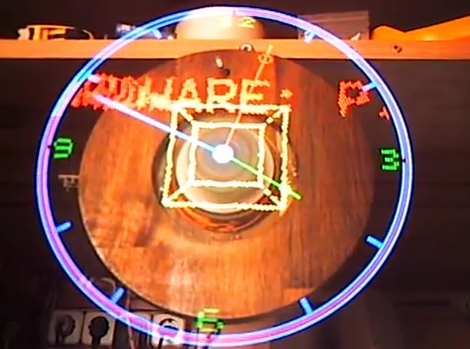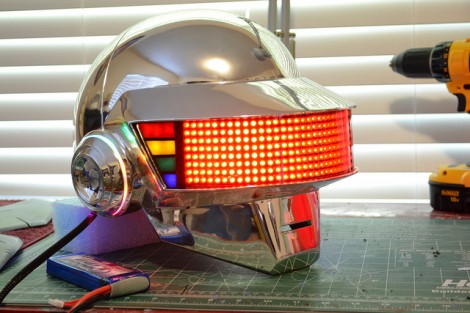
This Daft Punk helmet replica is beautiful to look at, but the deeper we delve into the build process, the more we begin to think that the entire project is a piece of artwork. [Harrison Krix] has been working on it for months, and just posted his three-part build log in September. Check out the video and the links to all three parts after the break.
Now [Harrison] isn’t new to prop replica scene. He’s the guy responsible for the other fantastic Daft Punk helmet we saw last year. He’s tapped the same fabrication skills to churn out an equally impressive chromed helmet, complete with addressable flashing LEDs. He built his own mold to create the body of the helmet, reminding us of the Storm Trooper helmet replicas we saw in July. While this was off being coated in chrome, he got down to business with the electronics.
The visor of the helmet has a red LED marquee. This, along with the multicolored visor sides and ear pucks, is controlled by an Arduino yellow jacket. The lights can be controlled by an iPhone app that connects to the helmet via WiFi, letting a user push custom messages to the display, and alter the light patterns. The build shines on the inside as well as the outside with an incredibly clean LED matrix build, and clever control placement for switching each part on or off.
Continue reading “IPhone Controlled Daft Punk Helmet Replica A Dazzling Build”

